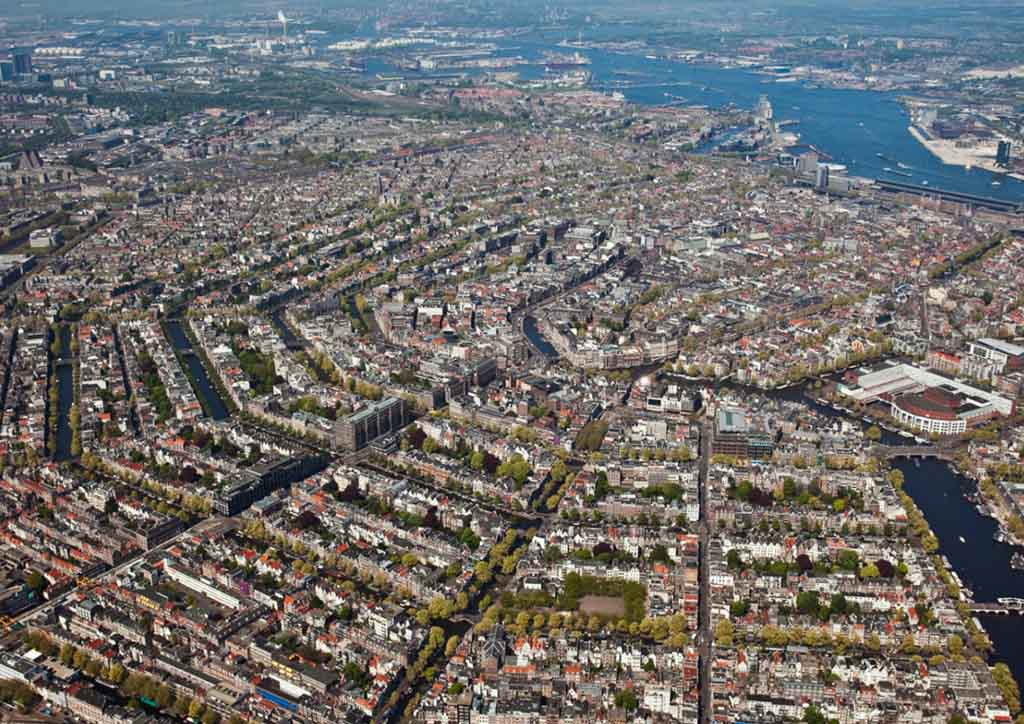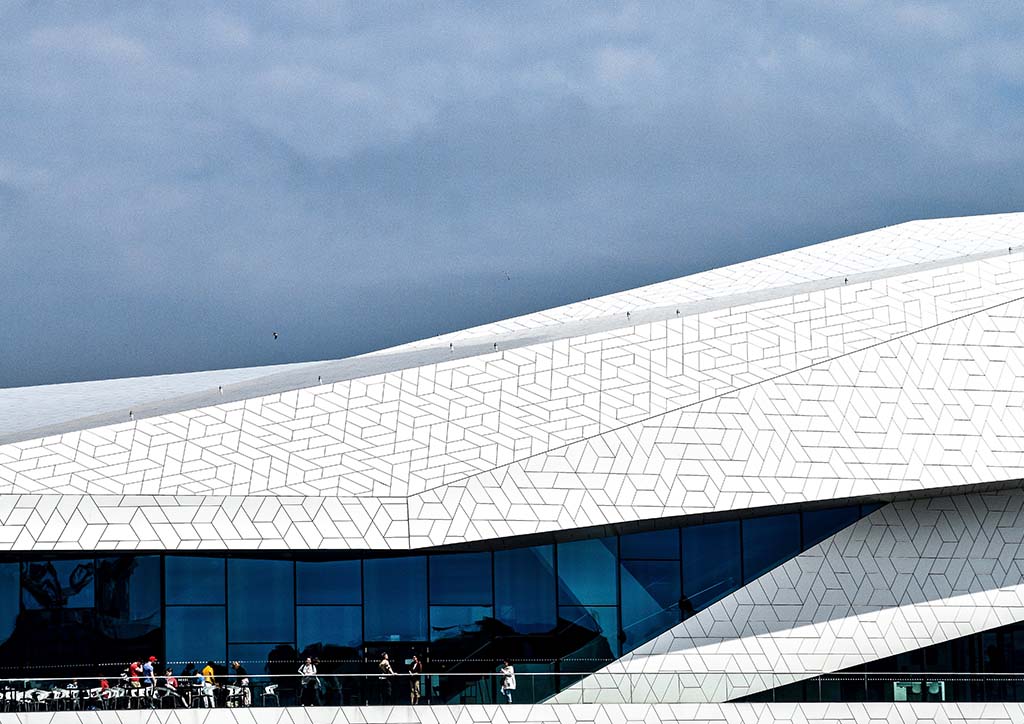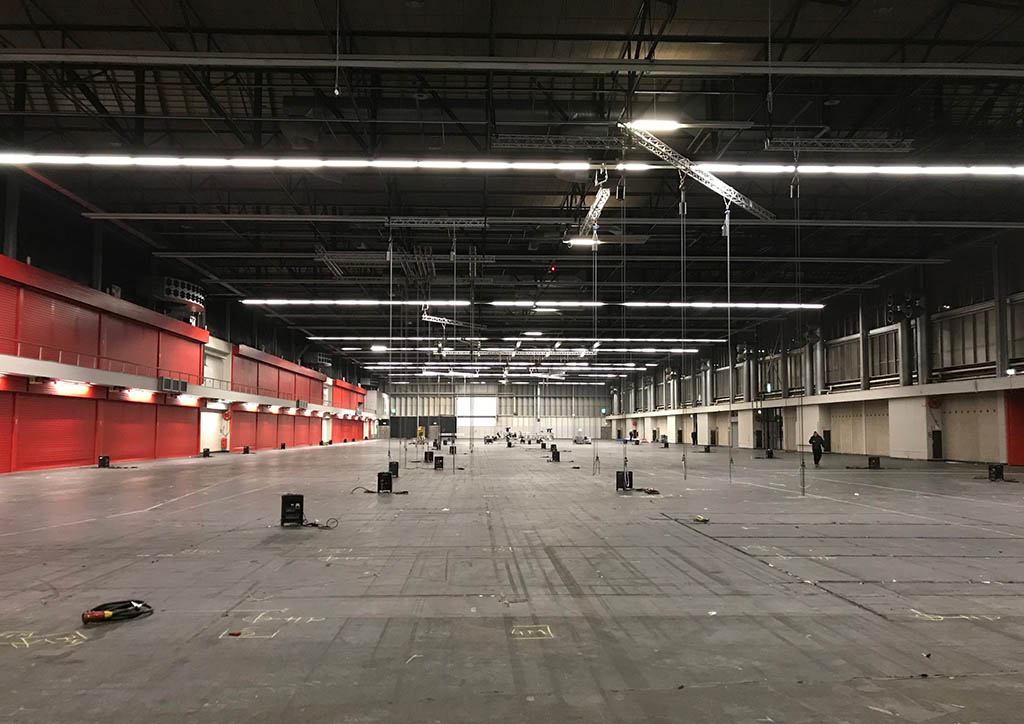
Going with the FLOW: Amsterdam hosts the World Architecture Festival for a second time
The World Architecture Festival (WAF) takes place this week in the Dutch capital, Amsterdam, for the second year in a row. This year’s theme is “FLOW – People, Data, Nature, Power” and focuses on the responsibility of buildings and architecture, from environmental, political, and societal standpoints. The theme could not be more apt for the host country, as Amsterdam and the Netherlands lead in efforts to transform static cities into truly environmentally sustainable and socially circular metropolises.

One of the best-planned cities in the world
Amsterdam is known for its urban planning centered on beautiful canals, 17th-century brick façade homes, century-old bridges, small alleys, and quaint cafés. The city is made up of over 7000 beautiful gable roof heritage buildings that have been converted into hip cafés, restaurants, clubs, residences, museums, and retail spaces. Amsterdam is also internationally renowned for its vast collection of art in the museum compound nested in the middle of the city, coupled with over 200 performance sites that host local and international companies. The charm of the traditional Dutch houses contrasts widely from the thriving modern energy created by the city’s diverse and busy population, creating a fascinating urban landscape.

While the city center is seemingly trapped in the past, with its well-maintained, old-world traditional architecture, Amsterdam and the Netherlands are at the forefront of sustainability. The Netherlands has been making strides in sustainability efforts to reduce the entire country’s carbon footprint. The Sustainable Amsterdam city agenda was created by the local government to set definitive goals towards a carbon-neutral city by 2020. Sustainable Amsterdam focuses on the creation of renewable energy, clean air, circular economies, climate resistance, and a sustainable municipality.
READ MORE: Who are the 4 Filipino and 20 ASEAN WAF 2019 finalists?
Emission-free in five years
Amsterdam City invests over € 1.5 billion in sustainable infrastructure and services annually. By 2020, the city estimates to be able to produce enough green energy for 50,000 households. Amsterdam aims to be entirely emission-free by 2025 by only permitting electric transportation within its boundaries. The government is slowly transitioning into electric public transportation systems, regulating diesel vehicles, construction of charging public charging points and the adjustment of routes to be more bike and pedestrian-friendly by keeping cars only on select main roads.

Circular Amsterdam
Inspiring the WAF 2019 theme, Amsterdam is a growing center for circular economies. Circularity and circular businesses focus on the removal of waste in production systems through reusing trash to create new products. This leads to the maximization of materials throughout their lifecycles and lessening the extraction of raw material from nature by integrating recycled materials into new production cycles.
Furthermore, Amsterdam has mandated the need to integrate circularity into construction processes. This will create not only lower wastage created during construction but will also long-term employment and business opportunities. Circularity has proven itself to be profitable. Many start-up companies have jumped on the opportunity to create new business models in response to the new needs of circular economies based on services and products of recycling and reusing existing materials.
Amsterdam is a city rich in culture, art and innovation. The balance of the city’s respect for heritage and tradition; and its forward-looking mindset makes for the perfect setting for architectural discourse, exchange of ideas and celebrating the best in architecture and interior design.

READ MORE: BluPrint and Grohe host a rehearsal and send-off for Philippine WAF finalists
The WAF venue
The RAI International Exhibition and Congress Centre, or simply, RAI complex, was built in 1961 but it has its roots in Amsterdam’s first bicycle trade show held by Dutch bicycle manufacturers 126 years ago. The bicycle association, Rijwiel-Industrie or RI, later changed its name to Rijwiel en Automobiel Industrie or RAI, as more and more of its members expanded their businesses to making automobiles. This enlarged the original site, which, over the years, grew into one of Europe’s largest trade and conference complexes.

WAF beginnings
The World Architecture Festival is a relatively young event and competition program. Directed by Paul Finch, the editorial director of the Architectural Review, the very first WAF was held in 2008 in Barcelona, which hosted the festival for four years. Singapore then hosted the event from 2012 to 2015, encouraging many Asian design firms to participate. Berlin took over from 2016 to 2017, then Amsterdam from 2018 to 2019. This year has the largest crop of finalists yet—more than double the 224 shortlisted entries presented when WAF debuted eleven years ago.
The Philippines’ four entries and over 20 from the ASEAN region are among the 534 finalists from 70 countries vying for the World Architecture Festival’s Building of the Year, Future Project of the Year, and Small Project of the Year awards, to be awarded on December 6th. ![]()
BluPrint’s WAF coverage was made possible through the sponsorship and assistance of Grohe Philippines. Grohe is the founding sponsor of the World Architecture Festival. The editors also wish to thank Big Sky Nation for providing the editorial team’s internet connection throughout the coverage.
In partnership with Grohe


